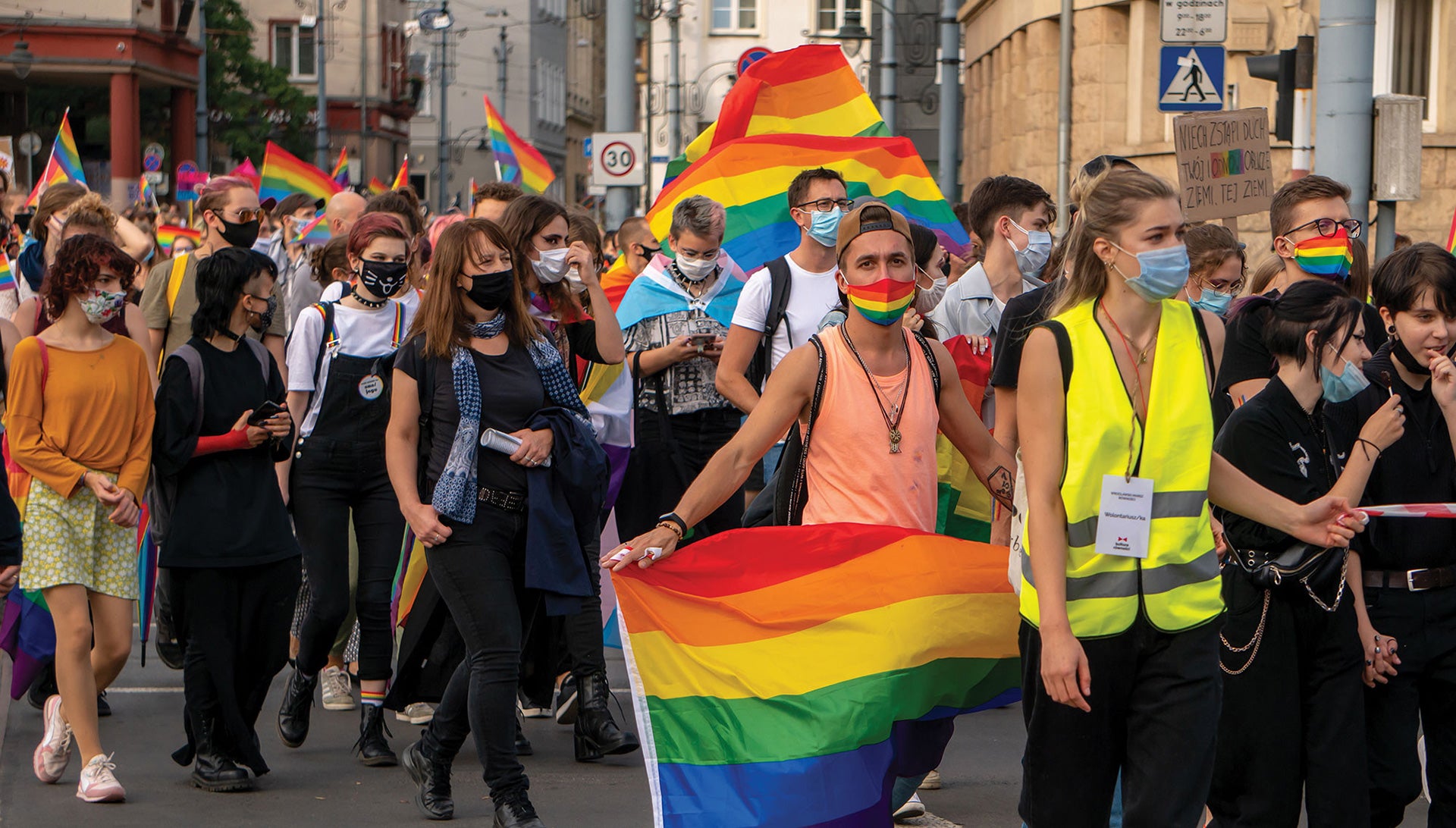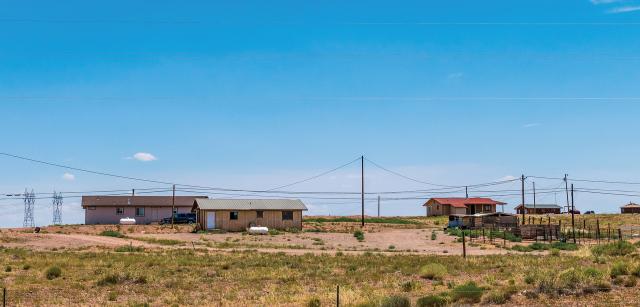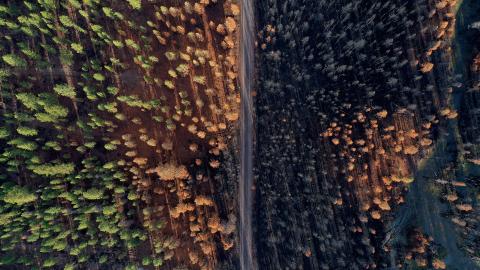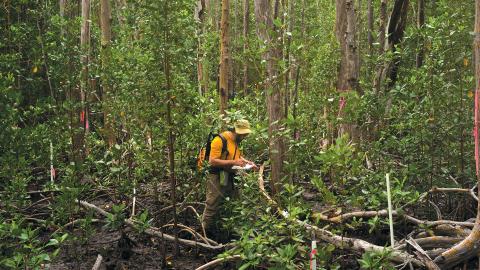

Photo: Konoplytska / iStock
Indigenous Nations in U.S. More Vulnerable to Climate Change
In a first-of-its-kind study, a team of researchers led by YSE Professor of Sociology Justin Farrell found that Indigenous nations across the U.S. have lost 98.9% of their historical land base and this land dispossession is associated with current and future climate risks.
The study, published in Science and made public in collaboration with the Native Land Information System, quantified the loss of Indigenous land since Europeans first settled in the U.S. More than 40% of tribes now possess no federally recognized land. The study also found that historical land dispossession was associated with current and future climate risks. Indigenous peoples were forced to move to lands that are more exposed to a range of climate change risks and hazards and are less likely to lie over valuable subsurface oil and gas resources. Present-day lands endure, on average, an increased number of extreme-heat days compared to historical lands. Wildfire risks are also more severe for about half of all tribes.
“There is a violent legacy that persists today, and it remains critical that we try to understand it at large scales. This is not only for historical clarity around land dispossession and forced migration but for concrete policies moving forward: How can we use this information so that day-to-day lived experiences of Indigenous peoples are improved — so that existing inequities are righted and future risks mitigated?” Farrell says.

Need for Greater Focus on Environmental Justice for LGBTQ+ Community
More than 1 in 3 LGBTQ+ Americans faced discrimination of some kind during 2020, including more than 3 in 5 transgender Americans, according to the Center for American Progress. A paper, published in the American Journal of Public Health by Michelle Bell, Mary E. Pinchot Professor of Environmental Health, and Leo Goldsmith ’20 MEM, examines how the discrimination is putting the LGBTQ+ community disproportionately at risk to environmental exposures.
The paper identifies air pollution, environmental disasters, and secondhand smoke as having a disproportional impact on LGBTQ+ populations. It outlines recommendations including anti-discriminatory policies within health care and the federal government, policies to aid the ability of transgender and nonbinary individuals to obtain appropriate identification documents, and the incorporation of LGBTQ+ issues into environmental justice research and organizations.
YSE Industrial Symbiosis Research Spurs Partnership with World Bank
A new World Bank platform, based on YSE’s research through the Center for Industrial Ecology, is promoting opportunities for the reuse of waste materials — a process known as industrial symbiosis — across a worldwide digital marketplace.
The platform will help foster industrial symbiosis opportunities in Eco-Industrial Parks, particularly in developing countries.
The data will include information on renewable technologies, waste management strategies, and environmental performance.
YSE PhD student Koichi Kanaoka has been working under the direction of CIE Director Marian Chertow, professor of industrial environmental management, to identify companies that can utilize each other’s byproducts for the platform — including those in the U.S.
“The idea is to try to avoid waste by maximizing the number of possible exchanges among the companies,” says Chertow, who is leading the partnership with the World Bank.

Electric Vehicles Have Emissions Advantage over Conventional Vehicles
Some analysts have raised concerns over how green the electric vehicle industry is, focusing particularly on indirect emissions caused within the supply chains of the vehicle components and the fuels used to supply the power that charges the vehicles.
A new study published in Nature Communications shows that the total indirect emissions from electric vehicles pale in comparison to the indirect emissions from fossil fuel-powered vehicles.
A research team, which included YSE Environmental and Energy Economics Professor Ken Gillingham, combined carbon pricing, life cycle assessment, and modeling energy systems to compare fossil fuel and electric vehicles.
“A major concern about electric vehicles is that the supply chain, including the mining and processing of raw materials and the manufacturing of batteries, is far from clean,” says Gillingham. “So, if we priced the carbon embodied in these processes, the expectation is electric vehicles would be exorbitantly expensive. It turns out that is not the case.”

Poor Households in India Bear Brunt of Pollution Effects
Poorer households in India are bearing a disproportional impact from pollution caused by others, a study published in the journal Nature Sustainability found.
YSE Associate Professor of Energy Systems Narasimha Rao, the study’s lead author, said the data will likely hold for other countries with similar issues.
The study is the first to analyze and review how different households contribute to air pollution. It also examines the impact of the pollution on households according to income level and defines a new pollution inequity index.
While industrywide pollution controls can reduce inequity in the impacts of ambient air pollution, providing low-income households with clean cooking fuels remains the most effective way to reduce the number of premature deaths from air pollution in India, the authors concluded.
Planning Cities for Sustainable Biodiversity
Within the next 30 years, the global urban population is projected to increase by 2.5 billion people, which will increase urban spread by 1.53 million square kilometers, directly threatening 855 species, according to the findings of a new study published in the Proceedings of the National Academy of Sciences of the United States of America.
The study relied on data from Yale’s Map of Life — a collection of species distribution data. The cities that pose the greatest threat to species due to expansion are predominantly located in the developing tropical regions of sub-Saharan Africa, South America, Mesoamerica, and Southeast Asia.
“Cities are actually part of the solution,” says Karen Seto, Frederick C. Hixon Professor of Geography and Urbanization Science, who co-authored the study with PhD student Rohan Simkin; Walter Jetz, director of the Yale Center for Biodiversity and Global Change and professor of ecology and evolutionary biology; and Robert McDonald, lead scientist for nature-based solutions at The Nature Conservancy. “We can build cities differently than we have in the past. They can be good for the planet; they can save species; they can be biodiversity hubs and save land for nature.”


